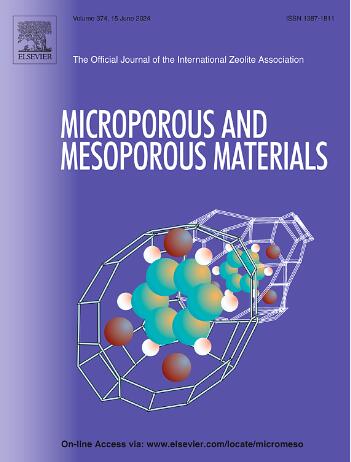Enhanced adsorption of Fe(II) from synthetic wastewater using modified bentonite: Isotherms, kinetics, thermodynamics, and adsorption mechanisms
IF 4.8
3区 材料科学
Q1 CHEMISTRY, APPLIED
引用次数: 0
Abstract
The introduction of Fe2⁺ ions into water systems poses significant environmental risks globally. This study investigates the adsorption efficiency of bentonite from the Kongyrtog deposit in Uzbekistan and its modified forms for Fe2⁺ removal from contaminated water. Batch adsorption experiments were conducted with Fe2⁺ concentrations of 2.0–20 mg/L, at pH 7.0, an adsorbent dose of 1 g/L, and temperatures between 288 and 308 K. The bentonites were named MED (modified with ethylenediammoniumdihydrochloride) and MGD (modified with hexamethylenediammonium dihydrochloride), while NKB refers to natural bentonite. Multiple linear regression (MLR) modeling validated the adsorption process, with high R2 correlation coefficients supporting the Langmuir model. Optimal adsorption conditions included a dose of 1 g/L, pH 5.2, a contact time of 40 min, and a temperature of 308 K, with the adsorption kinetics fitting a pseudo-second-order model. Using the Langmuir isotherm model, the maximum adsorption capacities (qmax) were determined as 8.47 mg/g for NKB, 8.51 mg/g for MGD, and 10.84 mg/g for MED. Among the modified bentonites, Fe2⁺ adsorption followed the activity sequence MED > MGD > NKB, with intraparticle diffusion modeling suggesting a two-stage adsorption process. The negative Gibbs free energy values (ΔG°) confirmed the process was spontaneous and endothermic. These modified bentonites offer a cost-effective alternative to activated carbon with the ability to regenerate up to four times. Initial regeneration efficiencies were 78 % for NKB, 83 % for MGD, and 86 % for MED. This study demonstrates the potential of modified bentonites as sustainable adsorbents for Fe2⁺ removal, contributing to advancements in eco-friendly water treatment technologies.

求助全文
约1分钟内获得全文
求助全文
来源期刊

Microporous and Mesoporous Materials
化学-材料科学:综合
CiteScore
10.70
自引率
5.80%
发文量
649
审稿时长
26 days
期刊介绍:
Microporous and Mesoporous Materials covers novel and significant aspects of porous solids classified as either microporous (pore size up to 2 nm) or mesoporous (pore size 2 to 50 nm). The porosity should have a specific impact on the material properties or application. Typical examples are zeolites and zeolite-like materials, pillared materials, clathrasils and clathrates, carbon molecular sieves, ordered mesoporous materials, organic/inorganic porous hybrid materials, or porous metal oxides. Both natural and synthetic porous materials are within the scope of the journal.
Topics which are particularly of interest include:
All aspects of natural microporous and mesoporous solids
The synthesis of crystalline or amorphous porous materials
The physico-chemical characterization of microporous and mesoporous solids, especially spectroscopic and microscopic
The modification of microporous and mesoporous solids, for example by ion exchange or solid-state reactions
All topics related to diffusion of mobile species in the pores of microporous and mesoporous materials
Adsorption (and other separation techniques) using microporous or mesoporous adsorbents
Catalysis by microporous and mesoporous materials
Host/guest interactions
Theoretical chemistry and modelling of host/guest interactions
All topics related to the application of microporous and mesoporous materials in industrial catalysis, separation technology, environmental protection, electrochemistry, membranes, sensors, optical devices, etc.
 求助内容:
求助内容: 应助结果提醒方式:
应助结果提醒方式:


